Photographing the UK's most endangered insects could help raise awareness and bolster conservation efforts, believes photographer Martin Wilson who shares his unique images in a new exhibition.
Originally my fascination with insects started when I was a child. Growing up in a rural community I spent many happy hours bug hunting in local woodlands.

My interest was renewed years later when as a father, and mature student, I started a photography degree. Exploring local nature reserves with my children, I was struck again by how exciting it can be to turn over a rotting tree branch, or an old stone and find an entire community thriving beneath. Insects became a natural subject choice for my photography.
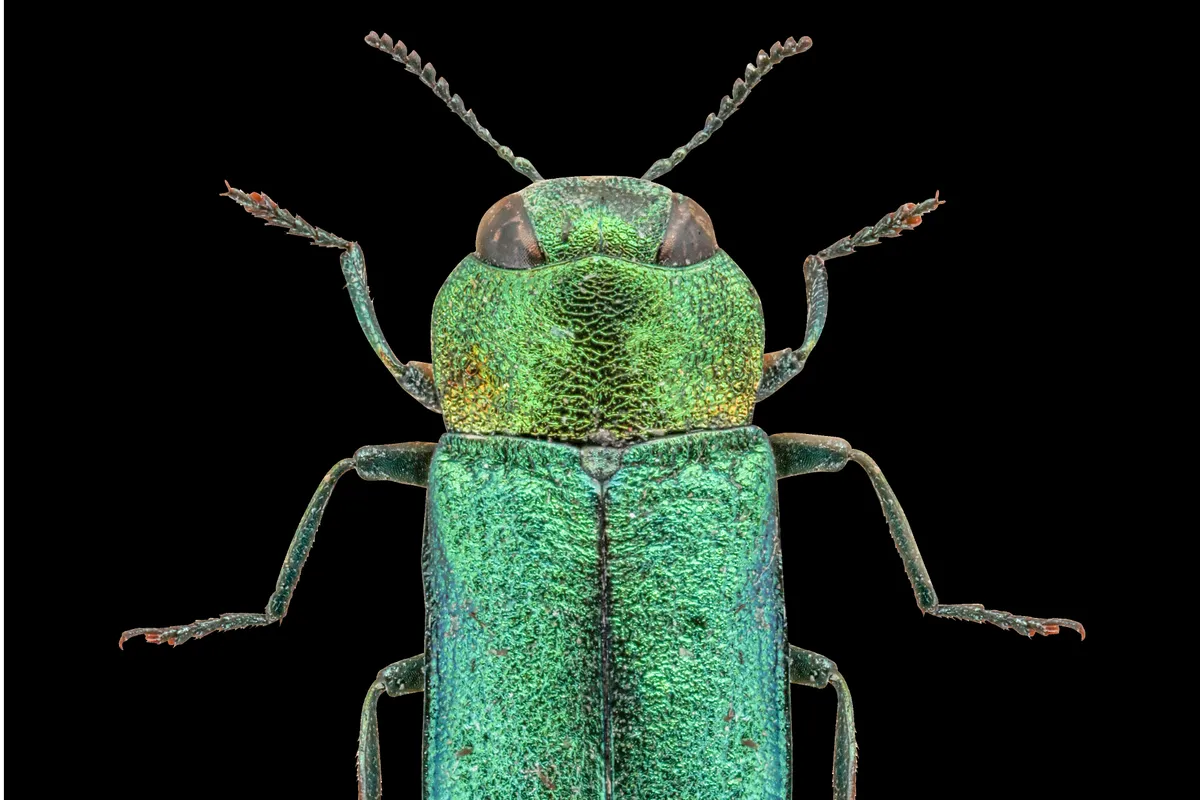
Over time I grew frustrated with the limitations of the human eye and our inability to really see and appreciate the beauty of their anatomical forms and the intricacy of detail. I began to specialise in macro photography, which involves producing photographs of small objects to larger-than-life size. My aim is to raise awareness of the UK endangered species of insects featured in the IUCN Red List (Red data book). I am hoping to aid conservation by providing the public with visual tools to identify these species, in an attempt to elevate their importance.
Red-Listed insect exhibition
Martin Wilson will be exhibiting his photography – a series of fifteen macro images, focused on endangered, threatened and extinct species from the UK IUCN Red List – at the Manchester Museum.
The exhibition opens on 26 January at 12.00 and will run for six months. Entry to the museum is free.
Find oure more: marvwilsonphotography.com

Aside from our appreciation of their beauty, in many respects insects are the unsung heroes of the ecosystem. They play a pivotal and very diverse role that is often not recognised. In some areas of the world eating insects is a novelty, but in others they provide an essential and much-valued source of nutrition. They are an integral part of many food chains and are essential to pollination as many flowering plants are reliant on insects to transport their pollen and ensure fertilisation. Bees are our most important pollinator and we are reliant on them to help us pollinate our food crops. To put this into perspective, 70 out of the top 100 human food crops are pollinated by bees. A particular area of interest in my macro photography has been discovering and celebrating our indigenous bee species.
Insects also escalate the decomposition of organic waste. Even in death insects are contributing – as their nitrogen-rich bodies decompose, they return this important element to the ground.
Shrill carder bee - Bombus sylvarum

Once widespread and common, the shrill carder bee has undergone a serious decline in recent years, mainly due to habitat loss and fragmentation, and is considered as endangered in the UK.
Conservation status: endangered.
Bilberry bumblebee – Bombus monticola

In the past the bilberry bumblebee was widely found in northern and western Britain but now appears to be in decline. As a cool-loving species it is likely to be vulnerable to climate change. In the UK it reaches the south-eastern edge of its distribution in the Peak District and is only found above 300m.
Conservation status: threatened
Large blue butterfly – Maculinea arion
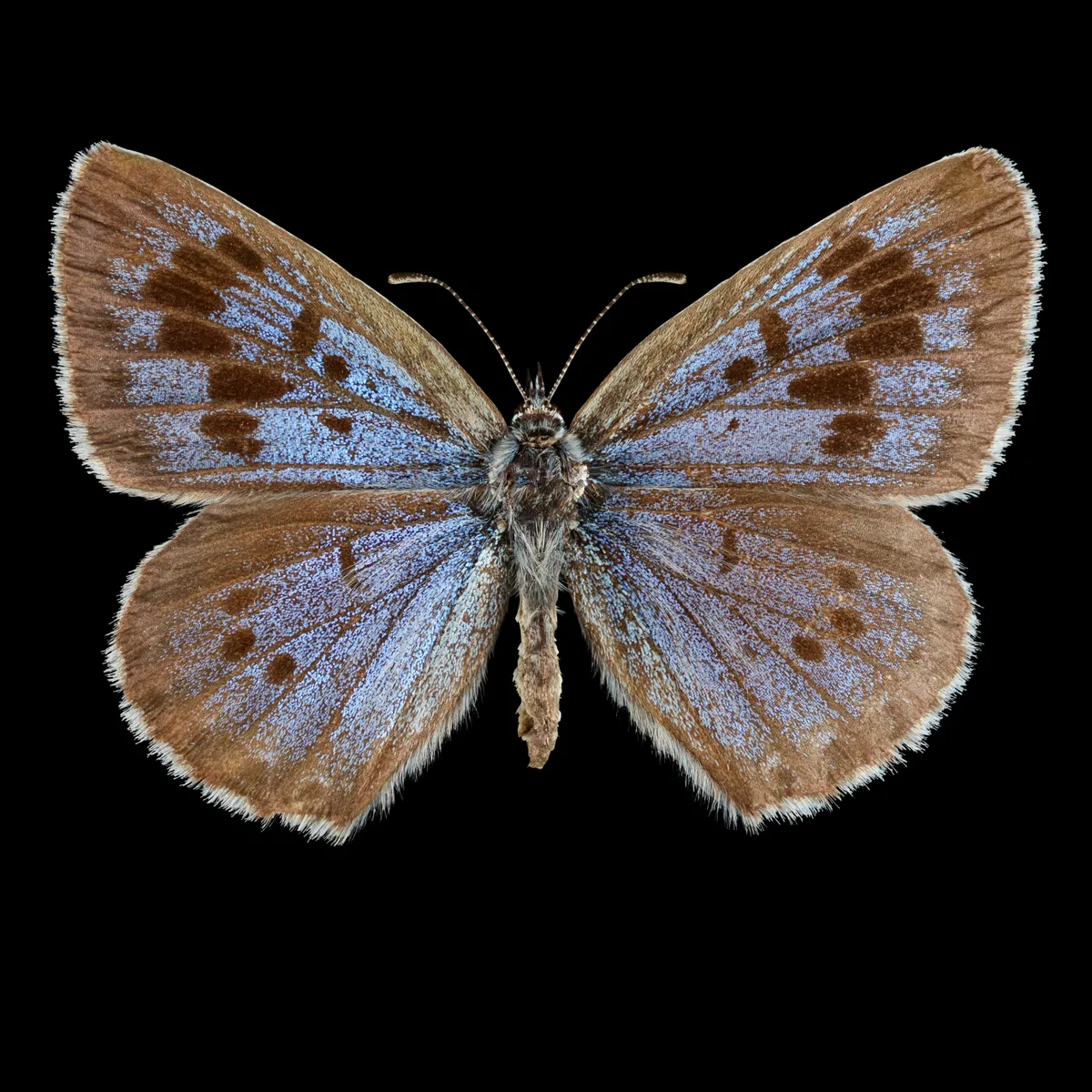
After its extinction in the British Isles in 1979, the large blue became the subject of a highly-organised reintroduction programme, using stock from Sweden. The estimated number of adults flying in 2006 was 10,000 on 11 sites, which is the largest number seen in the British Isles for over 60 years. This is a magnificent example of conservation in action. However, this insect is still vulnerable.
Conservation status: vulnerable
Cuckoo bee – Nomada sexfasciata
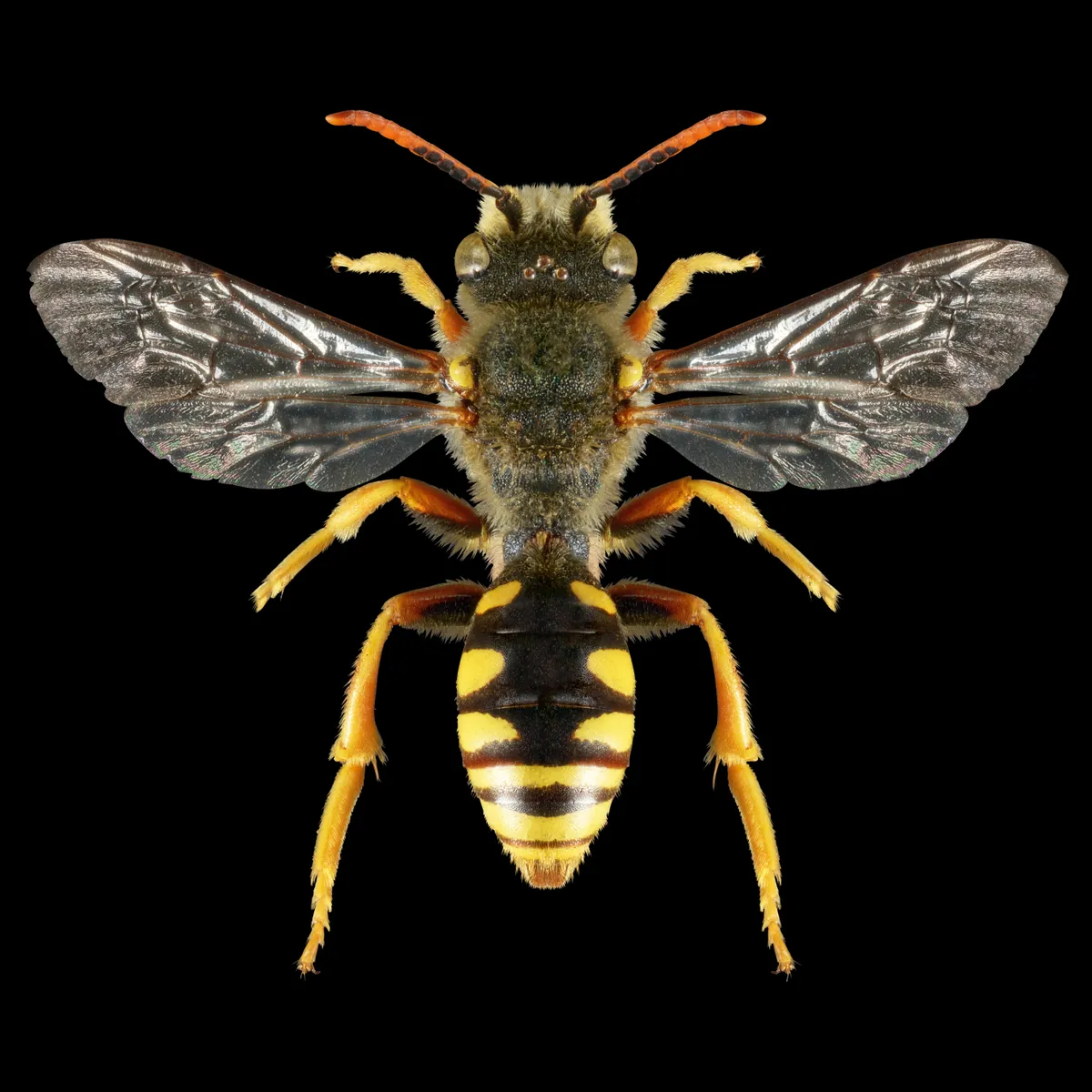
A rare and declining species known today from a single coastal site in south Devon. The species is a brood parasite of other bees. The cause of decline is unknown.
Conservation status: endangered.
Jewel beetle - Anthaxia nitudula
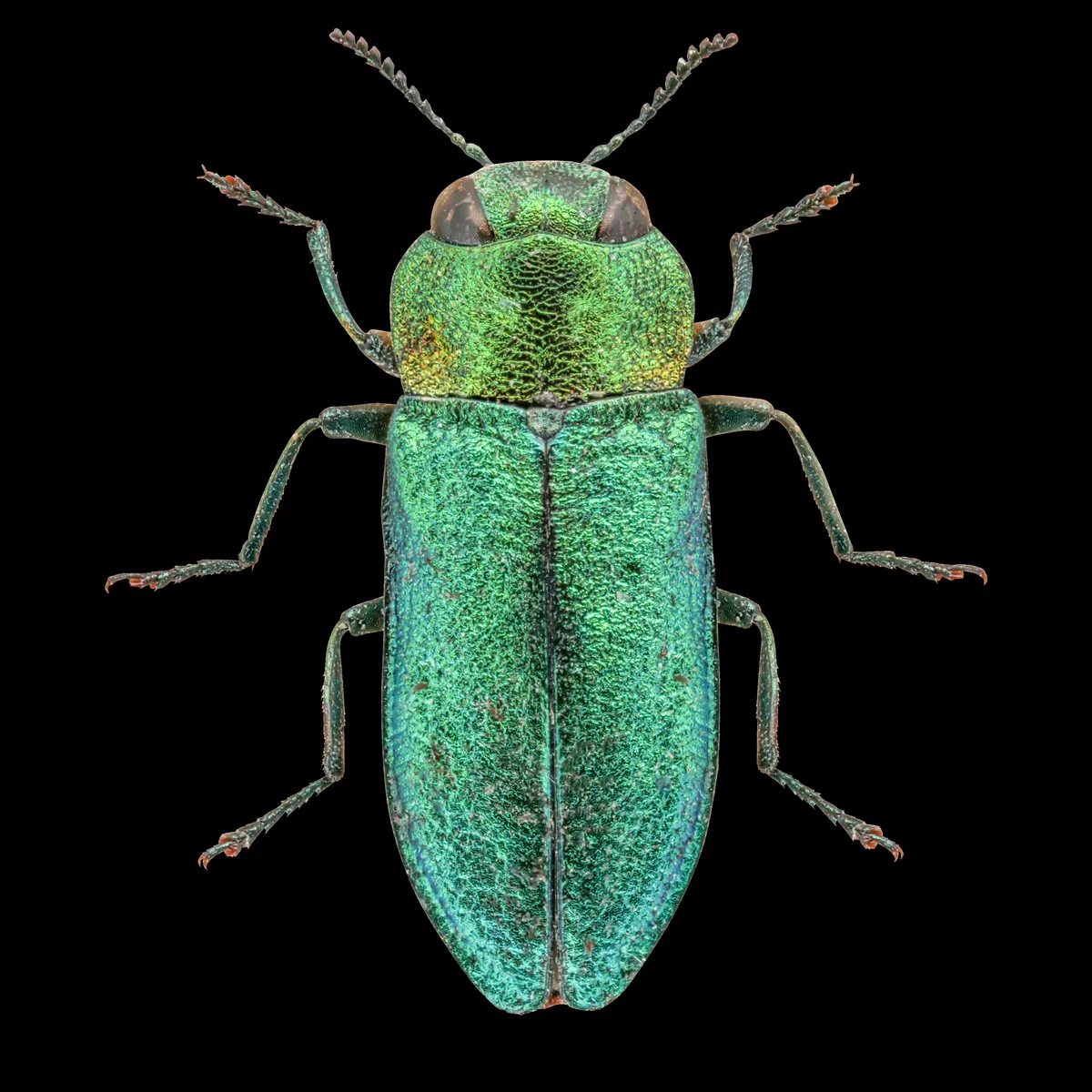
Possibly our most spectacular British jewel beetle is Anthaxia nitidula, only known from the New Forest and last seen there in 1954, which could suggest the species is now extinct. The adults are 5–7 millimetres (0.20–0.28 in) long and are pollinators.
Conservation status: endangered
Northern dune tiger beetle – Cicindela hybrida
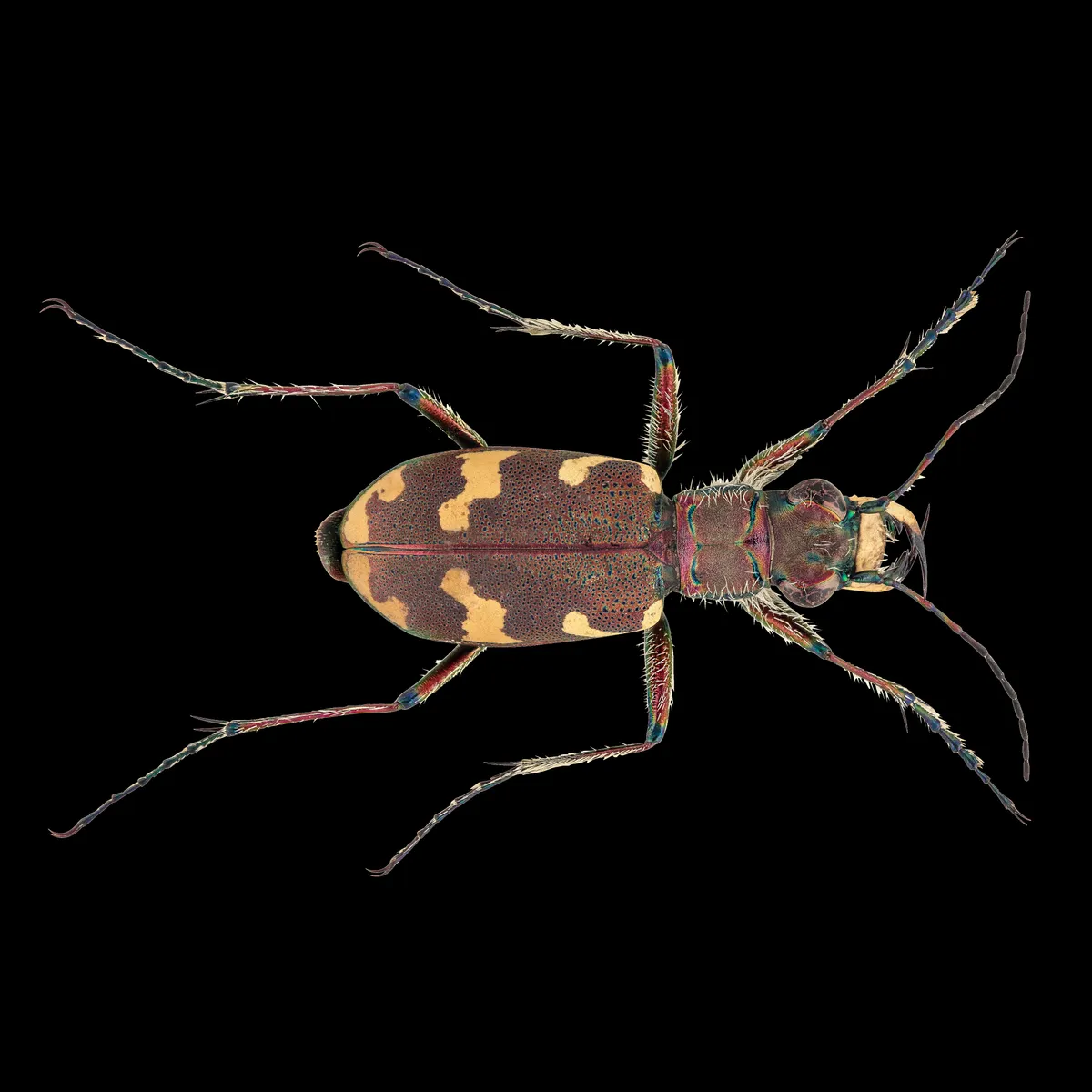
In the UK, its range is confined to coastal sites in Lancashire and Cumbria. Tiger beetles need open, bare sand to hunt over and bask in the sun, so the exposed fore-dunes along the top of the beach provide the ideal conditions. Despite various projects to stabilise sand dune systems, the increasing use of dunes for recreation poses a threat to the northern dune tiger beetle.
Conservation status: vulnerable.
The rest of the photography from this project can be found on Martin Wilson's website: marvwilsonphotography.com